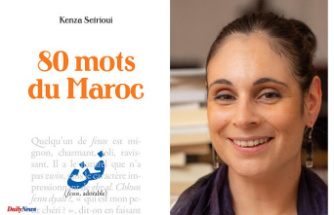Heating costs are exploding. It's understandable that we try to save energy everywhere. However, too much of a good thing can have undesirable consequences.
Heating has always been expensive, now it's frighteningly expensive. However, too much commitment to saving can lead to the formation of mold in the living room, which is a health hazard. Here are four supposedly good savings ideas that you shouldn't implement:
Better not: emit warm air into another room
Who hasn't done it before: If it gets too warm in the room, you open the door and release the valuable heat to a cooler room or the hallway. What you might not know: This can promote mold. Because this warm air transports more moisture than cool air. If it hits cold walls in the next room, it condenses on them. The plaster or wallpaper is soaked through - and that can promote mold.
Therefore, you should always keep the doors closed in rooms with different temperatures. The consumer advice centers recommend this even if the temperature difference is more than five degrees.
Better not: don't heat at all
It may make financial sense not to heat parts of a house. The rarely used guest room, for example. But that can also encourage mold growth. In the worst case, water pipes will also freeze. The German Energy Advisor Network therefore recommends heating all rooms to around 16 degrees on cold days, and even around 18 degrees in poorly insulated buildings.
As a minimum, the frost guard setting on the radiators should be used - that's the snowflake on the thermostat. This setting prevents the radiator and possibly the pipes in its immediate vicinity from freezing in a very cold room.
Better not: Only rarely air
Why should you ventilate expensive heating energy out of the window? The answer is the same as for the previous tips: otherwise there is a risk of mold forming. This is because warm air can carry much more water vapor than cool air. The air humidity in the room is reduced by airing out the warm indoor air and airing in the cool outdoor air.
The good news: It is enough to ventilate briefly several times a day, or even better, to ventilate the room. Consumer advice centers recommend 3 to 5 minutes when outside temperatures are low in winter or when it is windy. In spring or autumn, the complete air exchange can take 10 to 20 minutes.
If you still want to stretch the ventilation intervals as long as possible on bitterly cold days, you should open the windows at the latest when the windows are fogged up and the walls feel wet. At this point, the relative humidity in these locations is 100 percent. However, mold forms directly on a wall from a relative humidity of around 70 to 80 percent.
It is therefore even better if you are very economical to keep an eye on the humidity with a hygrometer. Such devices are available cheaply at hardware stores. Optimally, the humidity in rooms is 40 to 60 percent - with values in this range you are actually safe from mold growth.
But you have to know that the humidity can vary in different places in the room. An example: The relative humidity in the middle of the room can be 50 percent, but it can be too high on an uninsulated outer wall.
Better not: When you get home, turn the heating up all the way
A lot of us do it: you come home to a cold room and you turn the mechanical thermostats up to the max so that it warms up faster. Unfortunately it doesn't work that way. And maybe it costs extra. Because the thermostat only regulates the final temperature the room should reach, but not how quickly this should happen.
This means that if you set the thermostat to level 5, you not only have to wait just as long until the room is warm as with level 3. Under certain circumstances, you may inadvertently heat for much longer at full power if you don't turn it back to level 3 soon. The non-profit consulting organization co2online points this out.












